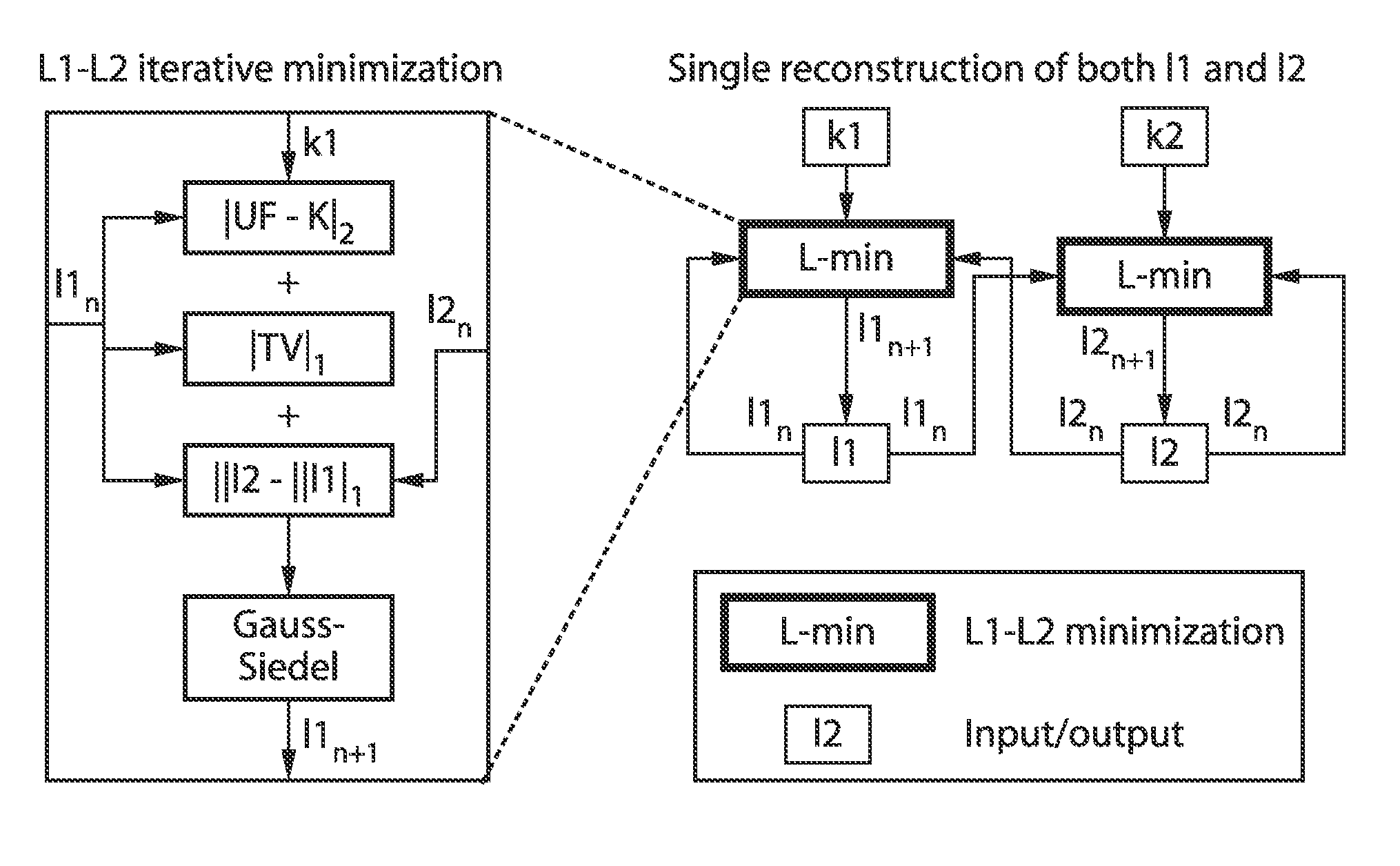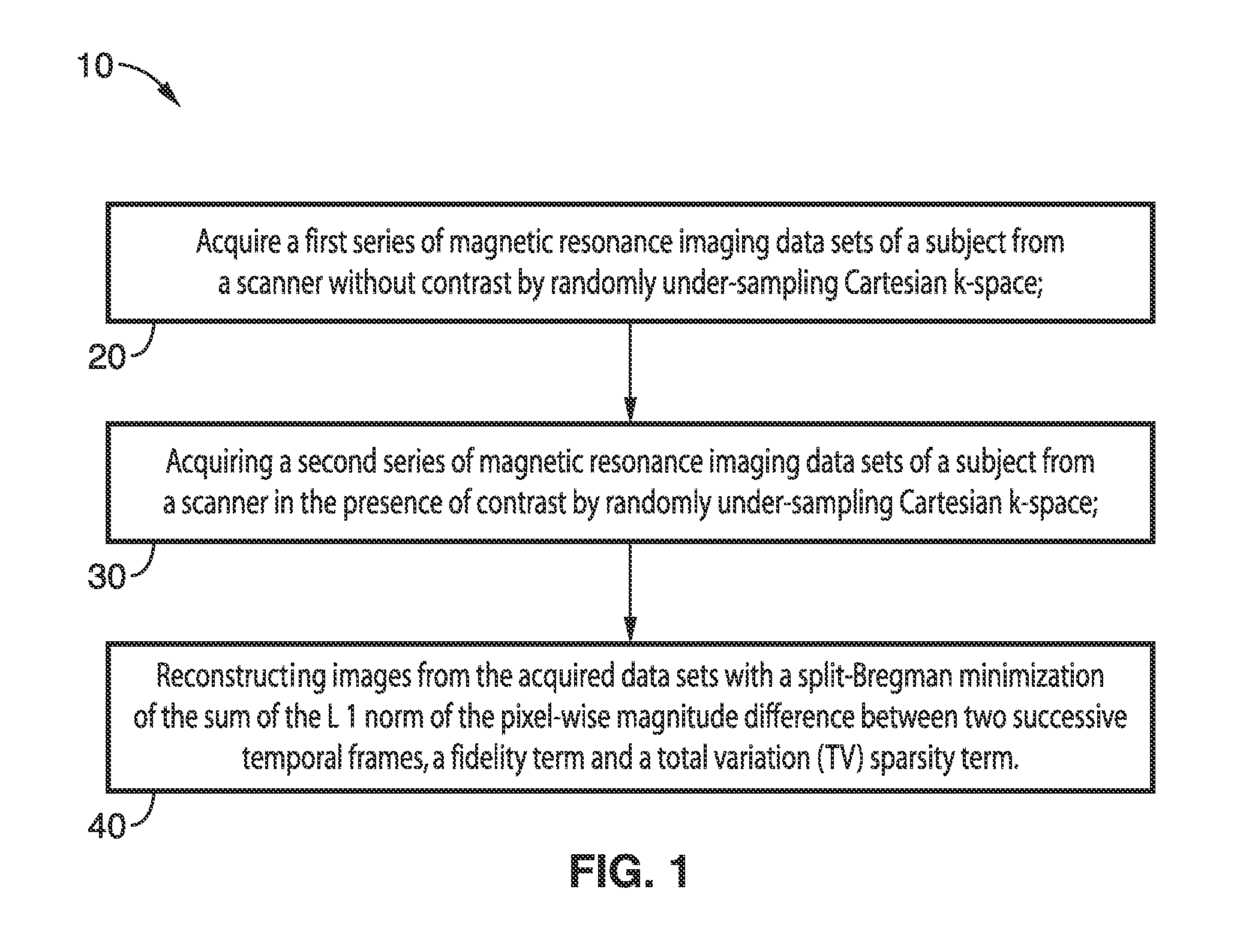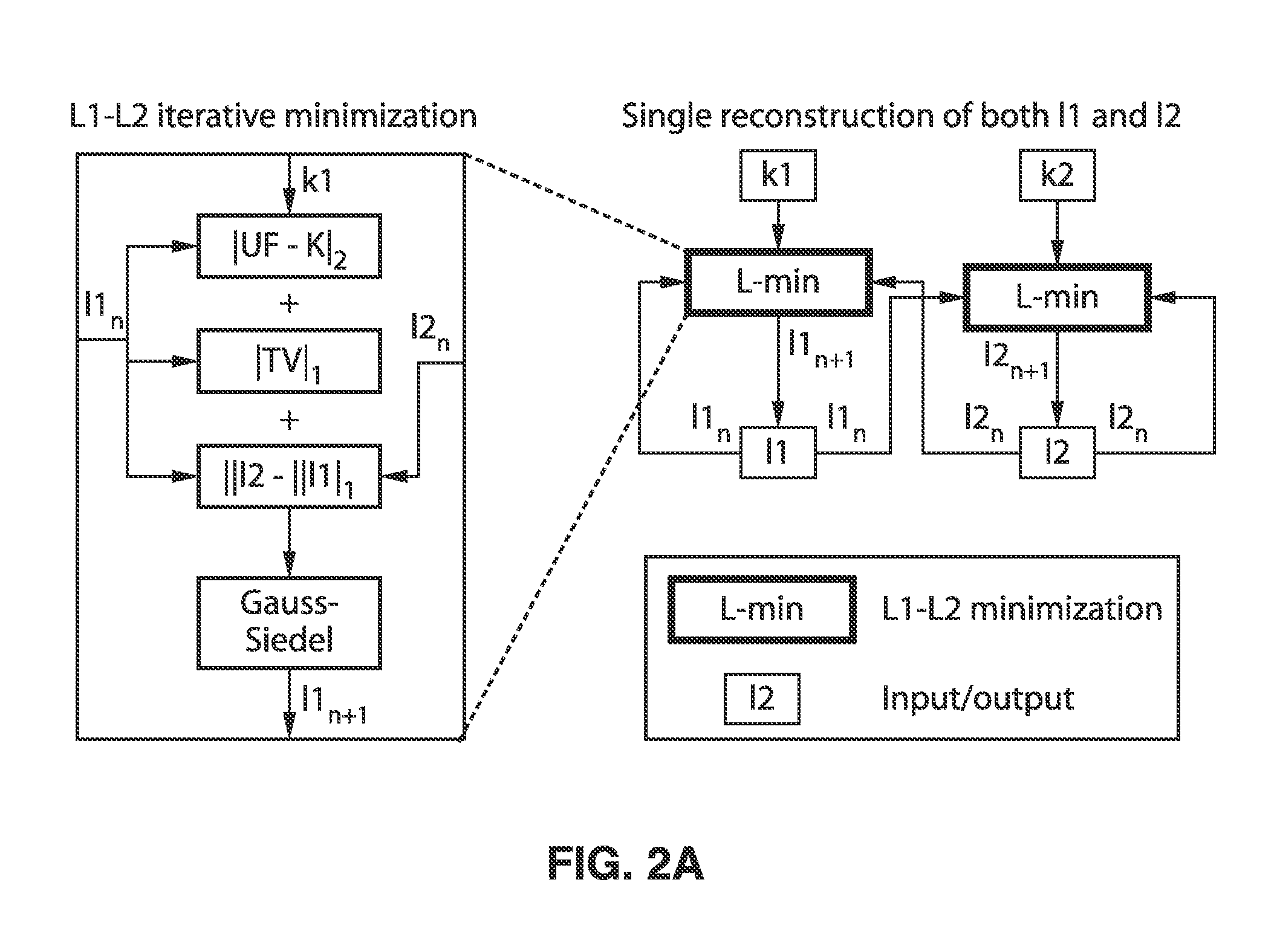High spatial and temporal resolution dynamic contrast-enhanced magnetic resonance imaging
a dynamic contrast and magnetic resonance imaging technology, applied in the field of magnetic resonance imaging, can solve the problem of quick delivery of poor quality image for timing assessment, and achieve the effects of high temporal and spatial resolution, enhanced sparsity of the subtracted volume, and enhanced contrast-enhanced magnetic resonance angiography
- Summary
- Abstract
- Description
- Claims
- Application Information
AI Technical Summary
Benefits of technology
Problems solved by technology
Method used
Image
Examples
example 1
[0046]In order to demonstrate the invention, full-sampled Cartesian 3D CE-MRA datasets from 6 volunteers were retrospectively under-sampled and different strategies of reconstruction were evaluated (independent CS, k-space complex subtraction CS and magnitude subtraction CS). The retrospective evaluation focused on the reconstruction of a set of 2 volumes: the mask pre-contrast and the contrast-enhanced volume. However, for a clinical dynamic CE-MRA acquisition, more than two temporal frames are typically acquired.
[0047]Specifically, in vivo high-resolution thoracic CE-MRA data were acquired from 6 healthy volunteers. A Cartesian 3D spoiled gradient echo sequence was used for the MRA acquisitions. All imaging was performed on a 1.5 T Avanto MRI system (Siemens Healthcare, Erlangen, Germany) using a combination of 4 to 6 channels with a phased array surface coil (CP mode) and a spine coil. All in vivo data were imported into Matlab (MathWorks, Natick, Mass.) for offline reconstructio...
example 2
[0058]Given the optimization of the CS image reconstruction algorithm and a k-space under-sampling pattern, it was possible to evaluate CS image quality in a prospective fashion.
[0059]Following the retrospective study, 2 new volunteers were obtained for imaging at 1.5 T. A custom sequence was designed and implemented to prospectively under-sample the Cartesian matrix and consequently accelerated the acquisition to obtain a time-series of high-resolution 3D volumes throughout the course of a single contrast bolus within a single breath-hold. The Poisson-disk random under-sampling was implemented with variable density as described in the retrospective study. In order to reduce image artifacts and signal interferences caused by abrupt changes in the sampled k-space locations, a spiral k-space trajectory was designed. The k-space trajectory in the ky-kz plane started from the center of k-space. Samples were sorted according to their radius and angles to generate a spiral-like pattern in...
example 3
[0073]To further demonstrate the capabilities of the compressed sensing method, image series were acquired using the conventional TWIST view-sharing process and the CS method with parallel imaging for comparison. Evaluations of the methods were conducted on a phantom and on acquired clinical carotid TR-CE-MRA and thoracic TR-CE-MRA data sets.
[0074]The evaluation of the phantom was designed to reproduce the impact of view-sharing on time-resolved CE-MRA and to validate the reconstruction of reduced view-shared data using Compressed Sensing in the scenario of fast events in smaller vessels. A set of tubes was filled with a mixture of contrast agent (Gd-DTPA, Magnevist, Bayer) and saline. An air bubble was introduced using the clinical power-injector at 0.75 mL / s. A TWIST acquisition was performed throughout the injection to track the bubble in negative contrast, on a 3T scanner (Skyra, Siemens). The acquisition parameters are: A=5%, 5 B segments, temporal resolution=1.25 s, resolution...
PUM
 Login to View More
Login to View More Abstract
Description
Claims
Application Information
 Login to View More
Login to View More - R&D
- Intellectual Property
- Life Sciences
- Materials
- Tech Scout
- Unparalleled Data Quality
- Higher Quality Content
- 60% Fewer Hallucinations
Browse by: Latest US Patents, China's latest patents, Technical Efficacy Thesaurus, Application Domain, Technology Topic, Popular Technical Reports.
© 2025 PatSnap. All rights reserved.Legal|Privacy policy|Modern Slavery Act Transparency Statement|Sitemap|About US| Contact US: help@patsnap.com



